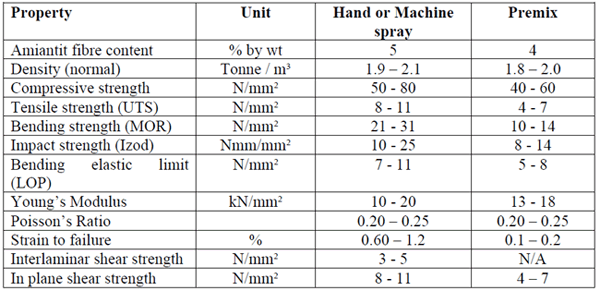Materials:
The basic materials used in ALRIMAL GRC are:
Cement:
Ordinary Portland and Rapid Hardening Portland Cement. Other cements, including sulphate resisting and HAC, are also used.
Aggregates:
Fine sand with an aggregate / cement ratio from 0.25 upwards and a particle size in the range 150 microns to 1 mm are typically used. Other fine inorganic aggregates can be used.
Water:
Clean and fresh water should be used. The water / cement ratio is low by concrete standards.
Admixtures:
Water reducing, plasticising and workability aids may be used. Accelerators may be used to speed demoulding. ALRIMAL AR Glass Fibre Supplied as continuous roving, which is cut during the making of GRC in to strands 12 to 38 mm long, or as precut chopped strands 12 to 25 mm long. The typical level of fibre used in GRC is between 4 and 6% of total weight.
Manufacture:
ALRIMAL GRC can be produced by several differing techniques, ranging from very manual processes to sophisticated mechanized systems. All systems first require the production of a slurry of the matrix components. The fibre is then added either at a further mixing stage before casting or by simultaneous spraying on or in to moulds. Compaction and cure of the product then takes place followed by demoulding. The time required for production depends on the type of component and manufacturing method and can range from days to minutes. ALRIMAL GRC products are normally manufactured in a factory to a high standard of finish and to close tolerances. After cure they can be machined by normal masonry techniques if required.
Fixing and assembly:
ALRIMAL GRC components can be fixed using conventional precast concrete techniques and can be assembled by normal techniques such as screwing, bolting, bonding etc.
Surface finish and textures:
The surface of components made in ALRIMAL GRC is as varied as the range of surfaces against which it can be formed. High quality flat surfaces can be obtained and almost all textures can be achieved, depending on the type of mould used. Deep and re-entrant shapes can be produced using flexible mould techniques. Aggregate facings, as found in the precast concrete industry are often used. By means of coloured cements or pigments, through colour can be achieved though often surfaces are painted.
Mechanical properties:
The properties of GRC are influenced by factors such as fibre content and distribution, type of matrix and method of manufacture. The properties can therefore be tailored to meet the design requirements of particular components. This data sheet gives typical characteristics for two types of GRC: sprayed material containing 5% fibre and premix material containing 4% (Table 1). In the case of the sprayed material the alignment of the fibres is random in two dimensions (a laminar construction) whilst in the case of a premix the orientation of the fibre is three-dimensional. The values are at 28 days – the normal test period for concretes. The stress / strain characteristics of a typical 5% sprayed composite are illustrated in the graph opposite. The fibre significantly improves both the tensile and bending strengths and increases the strain to failure resulting in a strong and tough material. Typical design stresses used for ALRIMAL GRC are shown in Table 2.
Creep and stress rupture:
GRC is capable of bearing loads over prolonged periods of time. In common with other cementitious materials, GRC components show an initial elastic deformation under load which is followed by a further slow creep deformation. These creep strains are small and the creep strain rate decreases with time. No stress rupture has been observed in tests carried out at twice the recommended working design stress in period up to 8 years.
Fatigue:
At the normal working stress levels, fatigue lives greater than 10 million cycles are obtained, both in bending and tension. Physical properties: The thermal, fire, moisture and acoustic properties are indicated in Table 3. Most of these are controlled by the matrix components, i.e. the hydraulic cement and aggregate.
Chemical resistance:
The chemical resistance of ALRIMAL GRC is broadly similar to that of concrete and the effect of the chemical on the cement is the predominant factor. Because ALRIMAL GRC has high density and a high cement content, it generally has a higher chemical resistance than concrete. Further improvements can be obtained by using specially formulated cements such as sulphate resisting, super sulphate and alumina cements. Alkaline solutions do not present a problem to ALRIMAL GRC.
Electrical:
The electrical properties of ALRIMAL GRC are largely determined by the amount of moisture present in the material in the prevailing conditions of use. In common with that of other cementitious materials, the electrical resistivity of GRC can be increased by surface coatings or impregnation.
Table 1- Mechanical Properties of ALRIMAL GRC:
